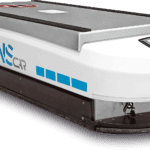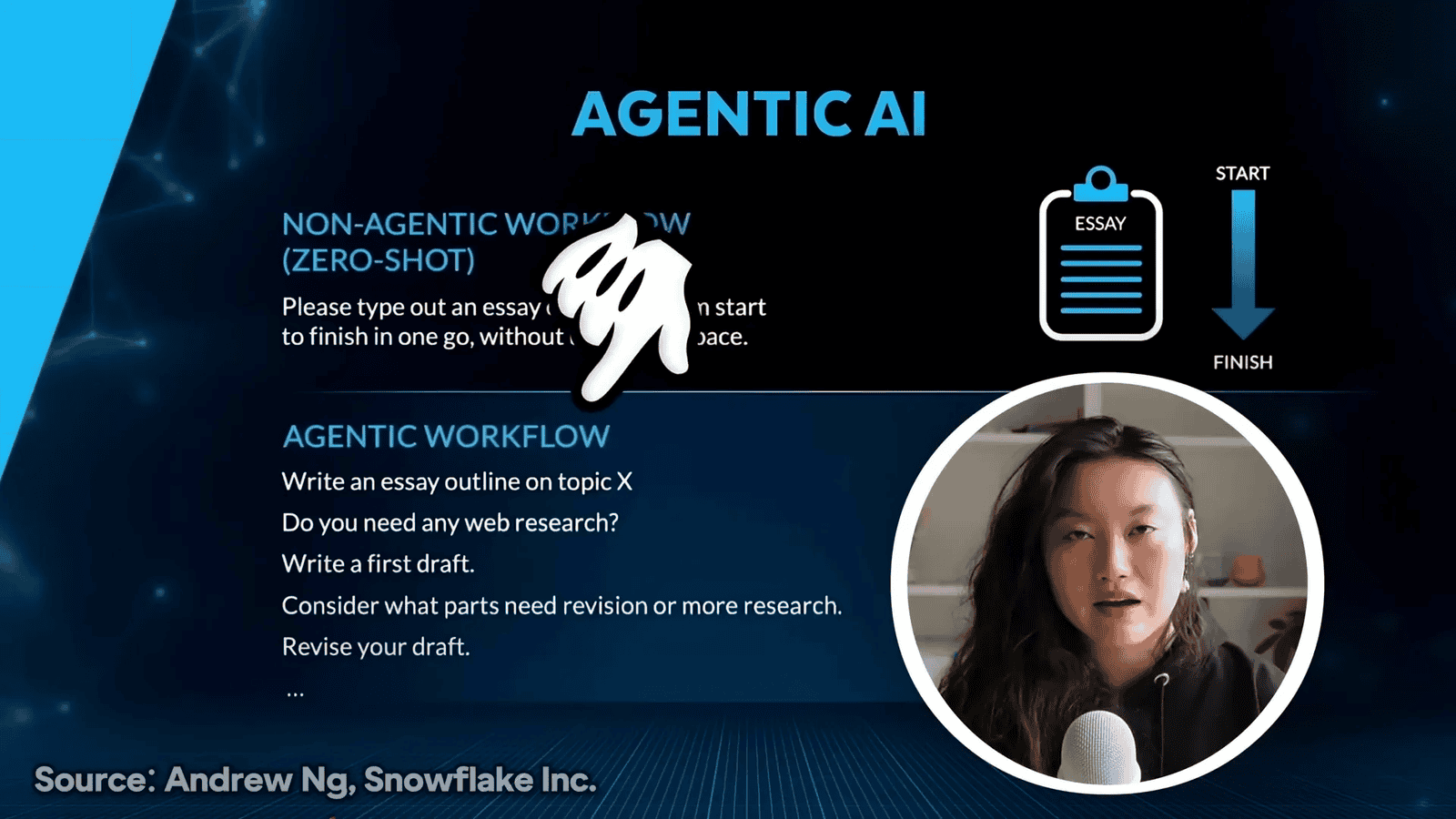In the highly anticipated Nvidia CES 2025 keynote, CEO Jensen Huang showcases groundbreaking innovations that redefine the realms of AI, gaming, and robotics. This presentation marks a pivotal moment in technology, revealing how Nvidia’s advancements are set to transform industries and elevate user experiences worldwide.
Table of Contents
- Introduction to Tokens and AI
- Welcome to CES 2025
- Nvidia’s Digital Twin Concept
- The Evolution of Nvidia: From MV1 to GPUs
- The Birth of CUDA and Its Impact
- Generative AI: Transforming Industries
- The Role of GeForce in AI Accessibility
- Real-Time Graphics Powered by AI
- Introducing the RTX Blackwell Family
- AI’s Role in Gaming and Performance
- Scaling AI and Data Demand
- Blackwell Architecture and Its Production
- The Future of AI Factories
- Advancements in Robotics and AI Integration
- Nvidia Cosmos: A World Foundation Model
- The Next Steps in Robotics Development
- Conclusion and Future Outlook
- FAQs
Introduction to Tokens and AI
Tokens are revolutionizing the way we interact with artificial intelligence. These building blocks are not just a technical concept; they represent a new frontier in AI development. By transforming words into knowledge, tokens enable machines to generate insights, create images, and even produce videos.
Beyond mere data processing, tokens breathe life into our digital interactions. They empower robots to navigate environments and learn from their surroundings, making them more adaptable and responsive. Imagine a world where AI can not only understand but also predict human needs and actions.
The Role of Tokens in AI Development
Tokens serve as the foundational elements that allow AI systems to learn and evolve. They encapsulate information in a way that machines can interpret, facilitating the creation of complex algorithms and models. This shift has opened up endless possibilities for innovation across various industries.
- Understanding Natural Language: Tokens help AI comprehend and generate human language, making communication seamless.
- Image Generation: They allow systems to create and manipulate visual content, enhancing user experiences.
- Robotic Learning: Tokens enable robots to learn from their interactions, improving their functionality in real-world applications.
Welcome to CES 2025
As we delve into the innovations presented at Nvidia CES 2025, it’s essential to recognize the excitement surrounding this event. Jensen Huang’s address sets the stage for a future where technology and creativity converge. Attendees are not just spectators; they are part of a transformative journey in the tech landscape.
The Atmosphere of Innovation
The energy in the room is palpable, with enthusiasts eager to witness groundbreaking advancements. Nvidia’s digital twin concept is a testament to how far technology has come, allowing us to visualize and interact with AI in real-time. This immersive experience underscores the significance of AI in shaping our future.
Throughout the keynote, Huang emphasizes the importance of collaboration and vision in driving technological progress. Each innovation unveiled is a building block toward a more integrated and intelligent world.
Nvidia’s Digital Twin Concept
Nvidia’s digital twin concept represents a revolutionary approach to understanding and simulating real-world scenarios. By creating a virtual replica of physical systems, businesses can optimize operations, predict outcomes, and enhance decision-making processes.

Applications of Digital Twin Technology
The implications of digital twin technology are vast and varied. From manufacturing to healthcare, the ability to simulate environments and processes leads to improved efficiency and innovation.
- Manufacturing: Companies can monitor production lines in real-time, identifying bottlenecks and optimizing workflows.
- Healthcare: Digital twins can model patient responses to treatments, allowing for personalized medicine approaches.
- Smart Cities: Urban planners can simulate traffic patterns and energy usage, promoting sustainability and better resource management.
The Evolution of Nvidia: From MV1 to GPUs
Nvidia’s journey from the MV1 graphics card to the powerful GPUs we see today is a remarkable story of innovation and perseverance. The MV1 laid the groundwork for what would become a revolution in computer graphics and AI processing.

Key Milestones in Nvidia’s History
The evolution of Nvidia is marked by several key innovations that have shaped the landscape of computing:
- Introduction of MV1: The first graphics card that allowed for advanced gaming capabilities on PCs.
- Programmable GPUs: Launched in 1999, enabling developers to create richer graphics and more immersive experiences.
- Development of CUDA: Introduced a programming model that unlocked the parallel processing power of GPUs, transforming computational tasks.
The Birth of CUDA and Its Impact
The introduction of CUDA marked a significant turning point for Nvidia and the broader tech community. This programming model allowed developers to harness the power of GPUs for a variety of applications beyond gaming.

How CUDA Changed the Game
CUDA’s impact on AI and machine learning cannot be overstated. By enabling parallel processing, it opened doors for researchers and developers to tackle complex problems with unprecedented speed and efficiency.
- Accelerated Research: Researchers can process vast amounts of data, leading to faster discoveries in fields like genomics and climate modeling.
- Enhanced Graphics: Developers can create more realistic and visually stunning graphics, pushing the boundaries of creativity.
- Broader Accessibility: With CUDA, developers from various backgrounds can leverage GPU power, democratizing access to advanced computing resources.
Generative AI: Transforming Industries
Generative AI represents the next frontier in artificial intelligence, allowing machines to create content that mimics human creativity. This technology has the potential to disrupt various industries, from entertainment to marketing.

The Rise of Generative AI
As generative AI continues to evolve, its applications are becoming more sophisticated:
- Content Creation: AI can generate articles, music, and even artwork, offering new ways for creators to express themselves.
- Personalization: Businesses can use generative AI to tailor marketing messages and product recommendations to individual preferences.
- Simulation and Training: Industries can simulate scenarios for training purposes, enhancing skill development without real-world risks.
The Role of GeForce in AI Accessibility
Nvidia has long been at the forefront of making artificial intelligence accessible to the masses. With the GeForce platform, AI capabilities have been democratized, allowing gamers and creators alike to harness the power of advanced computational techniques. This shift is not merely about performance; it’s about enhancing the user experience and enabling new forms of creative expression.
GeForce graphics cards are now equipped with AI-driven features that elevate everything from gaming visuals to content creation. With tools like DLSS (Deep Learning Super Sampling), users can enjoy high-quality graphics without sacrificing performance. This technology allows the GPU to render fewer pixels while using AI to generate the remaining details, resulting in stunning visuals at a fraction of the computational cost.

Transforming Gaming with AI
The integration of AI within the GeForce ecosystem transforms the way games are developed and played. With AI capabilities, developers can create more immersive environments, realistic character behaviors, and dynamic storytelling. As AI continues to evolve, so too will the gaming experiences that players can expect.
- Enhanced Graphics: AI-driven graphics enhancements allow for lifelike environments and character animations.
- Intelligent NPCs: Non-player characters can exhibit more realistic behaviors, improving gameplay immersion.
- Adaptive Difficulty: AI can analyze player performance in real-time, adjusting game difficulty to maintain engagement.
Real-Time Graphics Powered by AI
The future of gaming graphics lies in real-time rendering powered by artificial intelligence. Traditional rendering techniques often struggle to keep up with the demands of modern games, but AI has the potential to revolutionize this process. By leveraging AI algorithms, Nvidia is enabling graphics cards to produce breathtaking visuals in real-time, enhancing both performance and realism.
Ray tracing, a technique that simulates how light interacts with objects in a scene, has become a hallmark of next-gen graphics. Nvidia’s AI capabilities allow for advanced ray tracing techniques that were previously thought to be unattainable. By utilizing AI to predict and generate pixel information, the RTX series can render scenes that are visually stunning and computationally efficient.
AI-Driven Ray Tracing
The implementation of AI-driven ray tracing allows for real-time light simulation in gaming. This advancement not only enhances visual fidelity but also immerses players in more lifelike environments. Key benefits include:
- Dynamic Lighting: AI can adjust lighting conditions based on environmental changes, creating a more realistic atmosphere.
- Efficient Rendering: By predicting pixel information, AI reduces the workload on the GPU, resulting in smoother frame rates.
- Enhanced Visual Effects: Players can experience stunning visual effects, such as reflections and shadows, that elevate gameplay.
Introducing the RTX Blackwell Family
The RTX Blackwell family marks a significant leap in GPU technology, boasting unprecedented performance and capabilities. With over 92 billion transistors, these GPUs are designed to handle the most demanding applications, from gaming to AI workloads. The architectural advancements in Blackwell allow for seamless integration of AI processing alongside traditional graphics tasks.
One of the standout features of the RTX Blackwell series is its ability to intermix AI workloads with graphics processing. This capability ensures that users benefit from enhanced performance without compromising on visual quality. As a result, gamers and creators can push the boundaries of what is possible in real-time rendering.

Key Features of the RTX Blackwell Family
The RTX Blackwell GPUs come packed with cutting-edge features that redefine performance standards:
- Increased Transistor Count: With 92 billion transistors, the Blackwell architecture delivers unmatched processing power.
- Advanced AI Capabilities: Four petaflops of AI processing power enable complex computations and real-time enhancements.
- High Bandwidth Memory: The G7 memory from Micron provides 1.8 terabytes per second of bandwidth, ensuring smooth operation.
AI’s Role in Gaming and Performance
Artificial intelligence is not just a buzzword in gaming; it is a transformative force that enhances gameplay and performance. With the advent of AI technologies, developers can create games that learn and adapt to player behavior, resulting in a more personalized experience.
The integration of AI in gaming also extends to performance optimization. By analyzing system performance in real-time, AI can make adjustments to ensure stable frame rates and optimal settings. This dynamic adjustment leads to smoother gameplay and a more enjoyable user experience.

Personalized Gaming Experiences
AI’s ability to analyze player behavior opens the door for personalized gaming experiences:
- Adaptive Storytelling: Games can adjust narratives based on player choices, creating unique story arcs for each user.
- Smart Difficulty Scaling: AI can analyze player skill levels and adjust challenges accordingly, keeping gameplay engaging.
- Customized Content: Players can receive tailored content and recommendations based on their gaming habits.
Scaling AI and Data Demand
The demand for AI is skyrocketing, driven by the exponential growth of data generated each year. As industries increasingly rely on AI for decision-making and automation, the need for powerful computing resources has never been greater. Nvidia’s Blackwell architecture is designed to meet this growing demand, providing the necessary computational power to train large-scale AI models.
Scaling AI involves not only processing power but also the ability to manage vast amounts of data efficiently. As organizations produce more data than ever before, the infrastructure to support this growth becomes crucial. Nvidia is committed to providing the tools necessary for businesses to harness the power of AI effectively.

Strategies for Managing AI Growth
To effectively manage the growth of AI and data, organizations must adopt comprehensive strategies:
- Invest in Infrastructure: Building robust computing infrastructure is essential for supporting AI workloads.
- Utilize Cloud Solutions: Cloud computing offers scalable resources that can adapt to fluctuating data demands.
- Leverage AI Tools: Implementing AI management tools can streamline data processing and model training.
Blackwell Architecture and Its Production
The Blackwell architecture represents a significant advancement in GPU design, focusing on efficiency and performance. With its ability to handle both traditional graphics rendering and AI workloads, Blackwell sets a new standard for what GPUs can achieve. The architecture is designed for scalability, ensuring that it can meet the demands of future applications.
Production of the Blackwell GPUs involves a global network of factories and suppliers, ensuring that Nvidia can meet the increasing demand for its cutting-edge technology. The emphasis on efficient manufacturing processes allows for rapid deployment and availability of these powerful GPUs.

Key Aspects of Blackwell Production
The production of the Blackwell architecture involves several key aspects:
- Global Manufacturing: With over 45 factories involved, Nvidia ensures consistent quality and supply chain efficiency.
- Advanced Cooling Solutions: Both liquid and air cooling technologies are utilized to optimize performance and reliability.
- Customization Options: A variety of configurations are available to meet the specific needs of different data centers.
The Future of AI Factories
The concept of AI factories represents a significant transformation in how industries will operate. With the advancements in Blackwell technology, AI systems are becoming more efficient, allowing for a fourfold increase in performance per watt. This leap in efficiency means that the potential revenue generated within data centers can also increase exponentially.
AI factories are not merely a vision for the future; they are becoming a reality today. These systems integrate advanced AI capabilities to optimize production processes, manage supply chains, and enhance decision-making. By utilizing AI to analyze vast amounts of data in real-time, companies can streamline operations and respond to market demands more effectively.

How AI Factories Operate
AI factories leverage a combination of powerful computing systems and advanced algorithms to create a seamless manufacturing environment. This involves:
- Real-Time Data Analysis: AI systems continuously analyze data from various sources, enabling quick adjustments to production processes.
- Automation: Robotics and AI work together to automate repetitive tasks, reducing human error and increasing efficiency.
- Predictive Maintenance: AI algorithms predict equipment failures before they occur, minimizing downtime and maintenance costs.
Advancements in Robotics and AI Integration
The integration of robotics and AI is revolutionizing industries by enhancing productivity and efficiency. With the introduction of Nvidia’s advanced robotics systems, we are witnessing a new era where machines can learn, adapt, and operate autonomously.
These advancements are not just about hardware improvements; they also involve developing sophisticated algorithms that enable robots to interpret and react to their environments. This capability is crucial for applications ranging from manufacturing to healthcare, where precision and adaptability are paramount.

Key Innovations in Robotics
Several key innovations are driving the integration of robotics and AI:
- Autonomous Navigation: Robotics systems can now navigate complex environments using AI-driven perception and decision-making.
- Collaborative Robots (Cobots): Designed to work alongside humans, these robots enhance productivity while ensuring safety in the workplace.
- Machine Learning: Robots equipped with machine learning algorithms can improve their performance over time by learning from their experiences.
Nvidia Cosmos: A World Foundation Model
Nvidia Cosmos represents a groundbreaking development in AI, specifically tailored to understand and interact with the physical world. This world foundation model is designed to process and generate data related to physical dynamics, making it essential for applications in robotics and autonomous systems.
With the ability to ingest vast amounts of video and other data types, Nvidia Cosmos can simulate real-world scenarios, enabling developers to create more effective AI models. This capability is critical for industries that rely on accurate simulations to enhance their operational efficiencies.

Capabilities of Nvidia Cosmos
Nvidia Cosmos is equipped with several advanced features:
- Data Generation: It can generate synthetic data that closely mimics real-world scenarios, enhancing training datasets for AI models.
- Real-Time Simulation: The model enables real-time simulations that help in testing and validating AI performance across various environments.
- Integration with Omniverse: By connecting with Nvidia’s Omniverse, Cosmos can produce physics-based simulations that provide grounded insights for AI applications.
The Next Steps in Robotics Development
As we look toward the future, the development of robotics will focus on enhancing the capabilities of AI and machine learning. This will involve creating more sophisticated models that can handle complex tasks and operate in dynamic environments.
One of the key areas of focus will be the training of robots through synthetic data generation. By leveraging platforms like Nvidia Isaac Groot, developers can create vast datasets from a limited number of real-world demonstrations, significantly speeding up the learning process.

Future Directions for Robotics
The future of robotics development will be shaped by several trends:
- Enhanced Human-Robot Collaboration: Robots will increasingly collaborate with humans, taking on roles that require adaptability and learning in real-time.
- Focus on Safety: As robots become more prevalent in various sectors, ensuring their safe operation will be paramount.
- Scalability: Robotics solutions will need to be scalable to accommodate various industries, from manufacturing to healthcare.
Conclusion and Future Outlook
The advancements showcased at Nvidia CES 2025 signify a pivotal moment in the evolution of AI and robotics. The integration of these technologies is set to redefine industries, fostering increased efficiency and productivity.
As we move forward, the focus will be on developing AI models that can understand and interact with the physical world, enabling robots to operate autonomously in complex environments. The future is bright, with endless possibilities for innovation and growth in this exciting field.

FAQs
What are AI factories?
AI factories are advanced manufacturing systems that leverage artificial intelligence to optimize production processes, automate tasks, and enhance decision-making capabilities within industries.
How does Nvidia Cosmos enhance AI development?
Nvidia Cosmos provides a world foundation model that simulates real-world scenarios, generating synthetic data to improve the training of AI models, particularly in robotics and autonomous systems.
What role do robotics play in the future of AI?
Robotics will play a critical role in the future of AI by enabling machines to perform complex tasks autonomously, collaborate with humans, and adapt to dynamic environments.
This blog post is inspired by the video NVIDIA CEO Jensen Huang Keynote at CES 2025. All credit for the video content goes to the original creator. Be sure to check out their channel for more amazing content!










